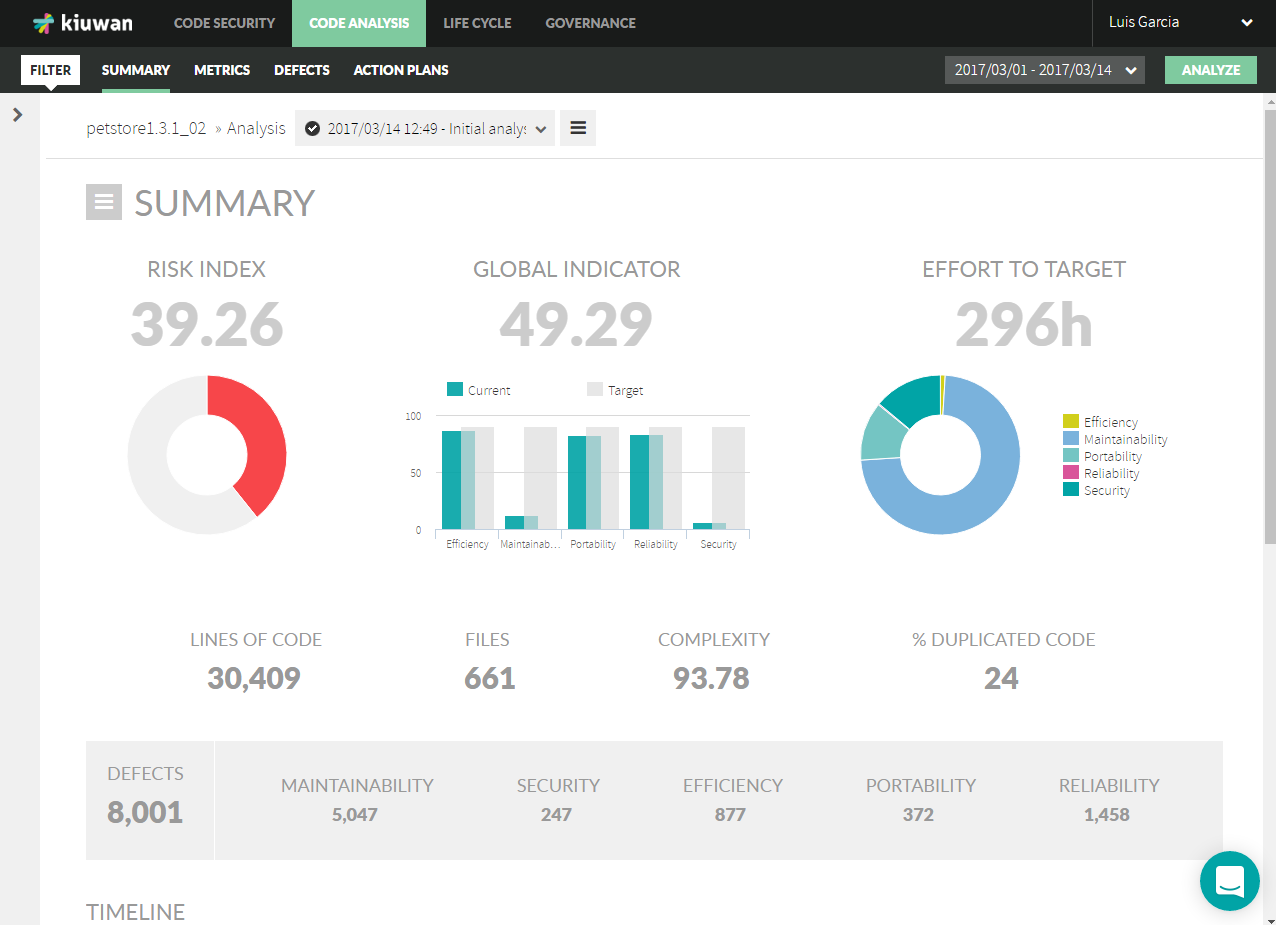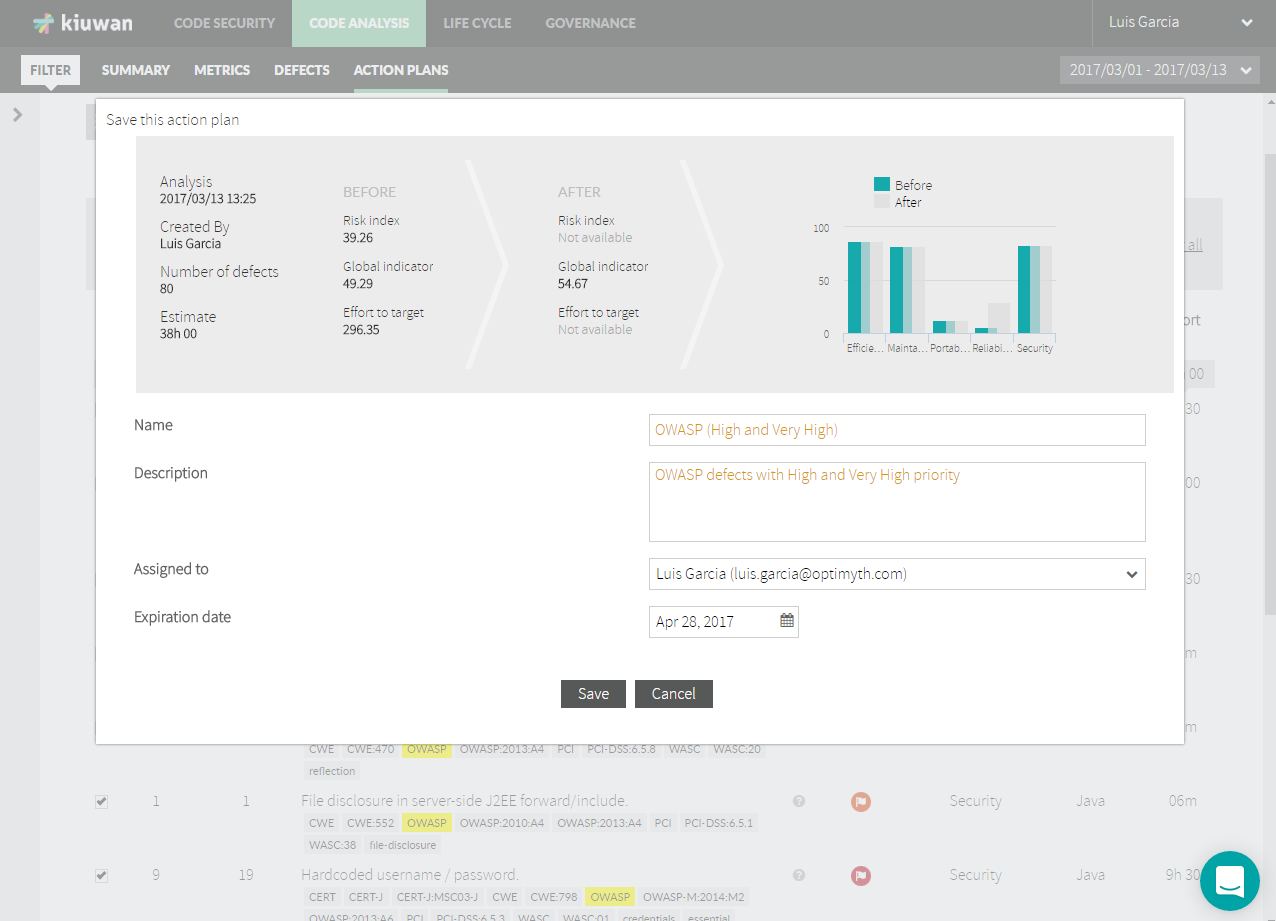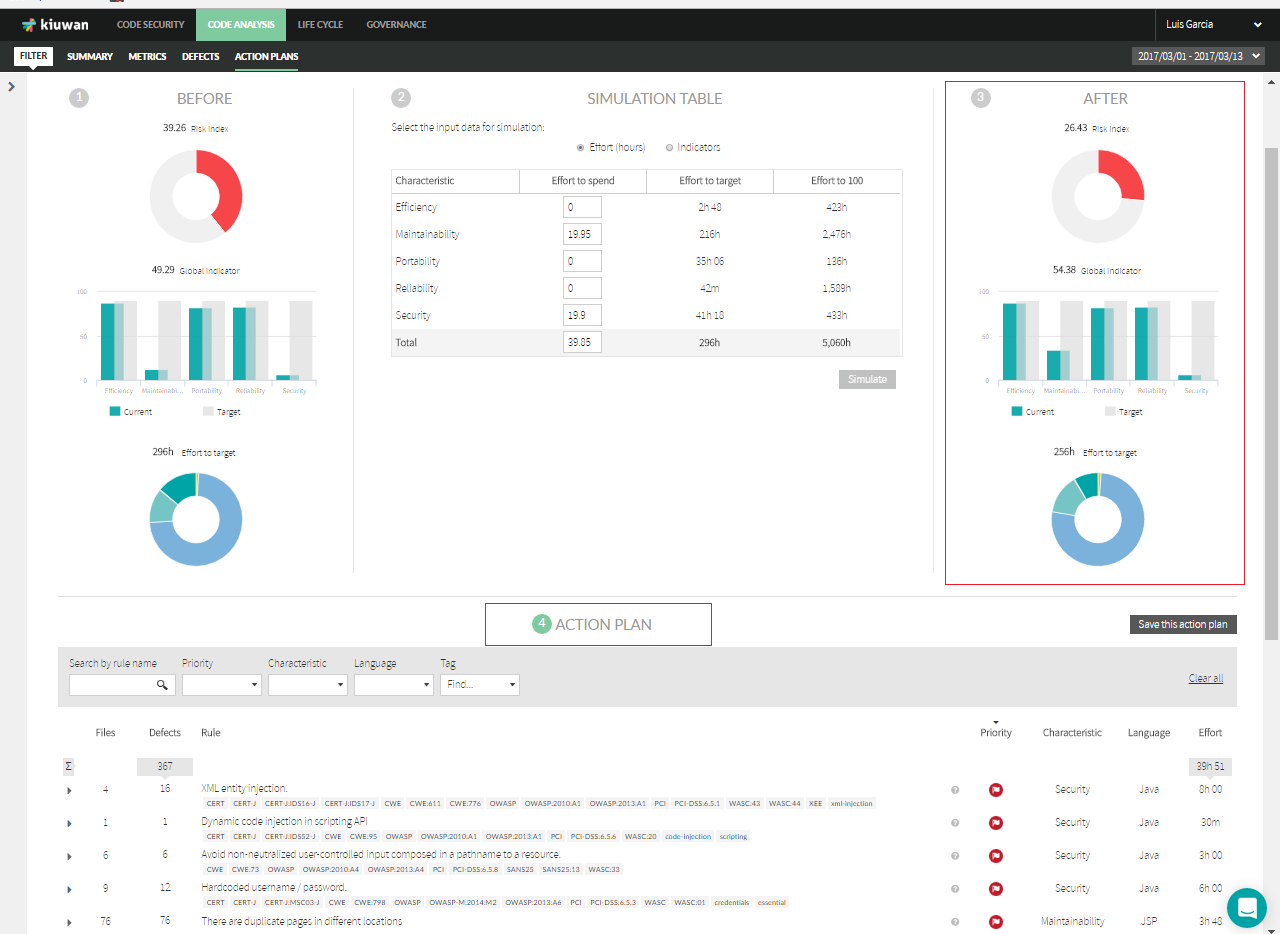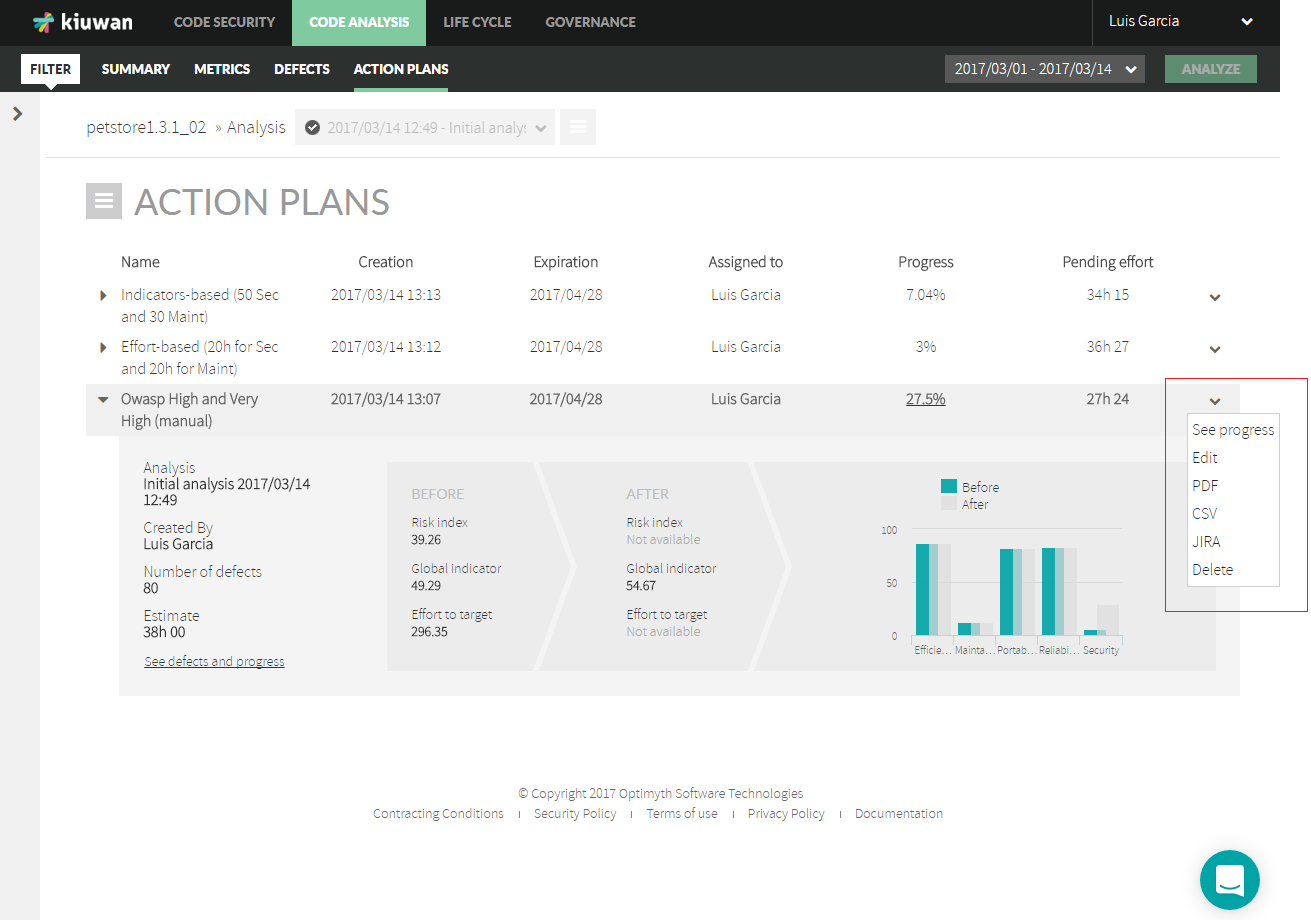...
That subset of defects to be fixed will be decided based on very different considerations, from technical to economical reasons. Most Most common reasons have to do with technical impact of the defects and available effort to fix them.
Those defects, together with target dates and responsible, constitute an Action Plan.
Kiuwan helps you during this process:
...
To decide which defects to fix, Kiuwan lets you:
- To do it on your own (by manually selecting the defects to be fixed based on a inspection of defects found), or
- To build an action plan based on your goals and a simulation (What If) of different scenarios
Let’s suppose we have an application that Kiuwan give us with following results
As we can see, although the application shows quite acceptable indicators for Efficiency, Portability and Reliability, we have poor levels for Maintainability and Security.
...
Once you select the application and analysis, you select the Action Plan tab and clicking on the Menu you will have both options:
- New action plan (to manually create it)
- What if (to open a simulation tool and let Kiuwan help you to detect those defects that will most contribute to fulfill your goal)
...
Kiuwan allows you to create an Action Plan by manually selecting those defects you are most interested in fixing.
For example, let’s suppose that you are very concerned on security and, taking OWASP as your main security reference, you want to make sure that OWASP-related High and Very High defects should be fixed. That’s your plan.
To do it, once you click New action plan, you will be presented all the defects of the application.
Just filter the defects list for the appropriate criteria select all of them (or any subset you consider).
...
Once done, just and click on Save this action plan
You will see the number of defects contained in this action plan, the effort required to fix them as well as the metrics before and after the fulfillment of the action plan.
...
What if you want to improve your code but you don’t know where to start?
Well, ‘What if’ feature helps you generating an automatic action plan with a given quantity of available hours or a quality goal you want to achieve.
...
Basically, What-If tool allows you to simulate as many scenarios as you want, letting you build an action plan based on two different strategies:
- Effort-based
- Indicators- based based
Effort-based
You could decide to spend a certain amount of hours to fix tasks.
For example, let’s suppose you have 1 week (40 hours) to dedicate, so you will need to identify those defects that will return you the highest return.
Kiuwan will distribute the effort in order to maximize Global Indicator.
You can specify the total amount to be distributed across all the characteristics or the amount to dedicate only on certain characteristics.
...
As another approach to effort-drive, you could decide to improve any of the characteristics to meet a certain value.
For example, using our example, you could want to have a plan to reach 50 for Security and reach 30 for Maintainability.
What-If let you to specify this and any other combination that suite your needs.
...
Whatever is the approach (effort- or simulator-driven), by clicking on Simulate button Kiuwan will generate the full list of defects to be fixed, as well as the future values of Kiuwan indicators after completion of the action planAction Plan.
Click on “Save Save this action plan” button plan button to create the Action Plan, or continues the simulation until you find an appropriate plan that suites your needs.
...
Monitoring the execution progress of an Action Plan
Clicking on Action Plans tab of Code Anlaysys Anlaysis will show all the available Action Plans for the selected application.
...
- Name of the plan
- Creation and Expiration Dates
- Starting analysis (where the Action Plan comes from)
- Number of defects (to fix in order to fulfill the plan)
- Estimate (effort needed to fix all the defects of the plan)
- Assignee (responsible to fulfill the plan)
- Progress (%)
- Pending Effort
Action Plan Progress (%) is calculated as the percentage of defects fixed in the last application analysis as compared to the defects when the action plan was created. By clicking on the Progress link, you will be presented with a detailed Progress page.
Pending Effort is calculated as the effort to fix the remaining defects.
As the application is further analyzed, Kiuwan will update progress indicators for every plan.
Detailed
...
Progress of an Action Plan
Clicking on the Progress link of any action plan, you will be presented the detailed Progress page.
At this page, you will be able to see the Remediation Timeline, i.e. a temporal view of the execution progress of the plan.
By hovering the mouse over any point you will see details such as analysis date and fixed vs total defects.
...
Circle graphics display information on Progress as well as Pending Defects (classified by Priority and Software characteristic).
Also, you will be presented with three tabs with a breakdown of action plan’ s defects ;
- Full Full listing of Total defects of the action plan
- Removed defects in the selected analysis
- Pending defects in the action plan
...
You can do it in two ways, either exporting the plan to a PDF or CSV or by creating the defects as Issues in JIRA.
Clicking on PDF you will get a full detailed PDF report.
...
This option allows you to export the items in the Action Plan to an existing JIRA instance.
This integration allows to:
- Choose Jira project to bind
- Choose the type of the Issues to be created
- Choose the priority of the issues
- Chose the way the Issues are created:
- To create one Issue per Rule (one issue per rule containing all the associated defects) , or
- To create one Issue per Defect (as many issues as action plan’s defects)
...



